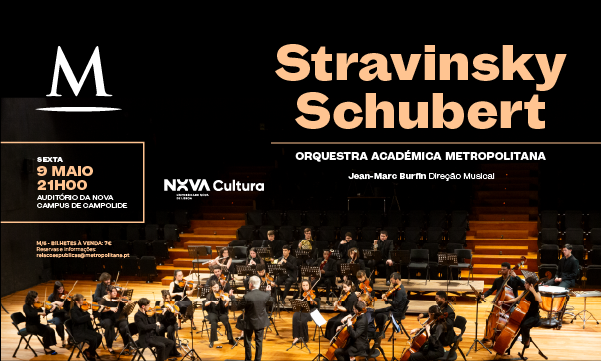The ballet Pulcinella was first performed at the Paris Opera in 1920, with sets by Pablo Picasso and choreography by Léonide Massine. But it was this orchestral suite, without the vocal parts, that popularised Stravinsky’s score. Freely inspired by the music of 18th-century composer G. B. Pergolesi, it was a pivotal work in his career, paving the way for the neo-classical style.
Schubert’s Symphony No. 6 has a larger orchestra. The autograph manuscript reads “Great Symphony in C Major” because it adds timpani, trumpets and clarinets to the instrumentation of the previous symphony. As fate would have it, it became known as “The Little” to distinguish it from another symphony composed ten years later, “The Great”.
Stravinsky Suite from the ballet Pulcinella
F. Schubert Symphony No. 6
Conductor: Jean-Marc Burfin and/or conducting students
Invitations to the NOVA community – confirmations by email by 6 May at 18.00
Detailed programme
Igor Stravinsky (1882-1971) – Suite from the ballet Pulcinella (1920) 23 min.
Symphony I. (Overture): Allegro moderato
II. Serenade: Larghetto
III. Scherzino – Allegro – Andantino
IV.Tarantella
V. Toccata
VI. Gavotta (with due variation)
VII. Alive
VIII. Minuet
Finale
Franz Schubert (1797-1828) – Symphony No. 6 in C major, D. 589 (1816) 30 min.
I. Adagio Allegro
II. Andante
III. Scherzo: fast – slow
- IV. Allegro moderato


